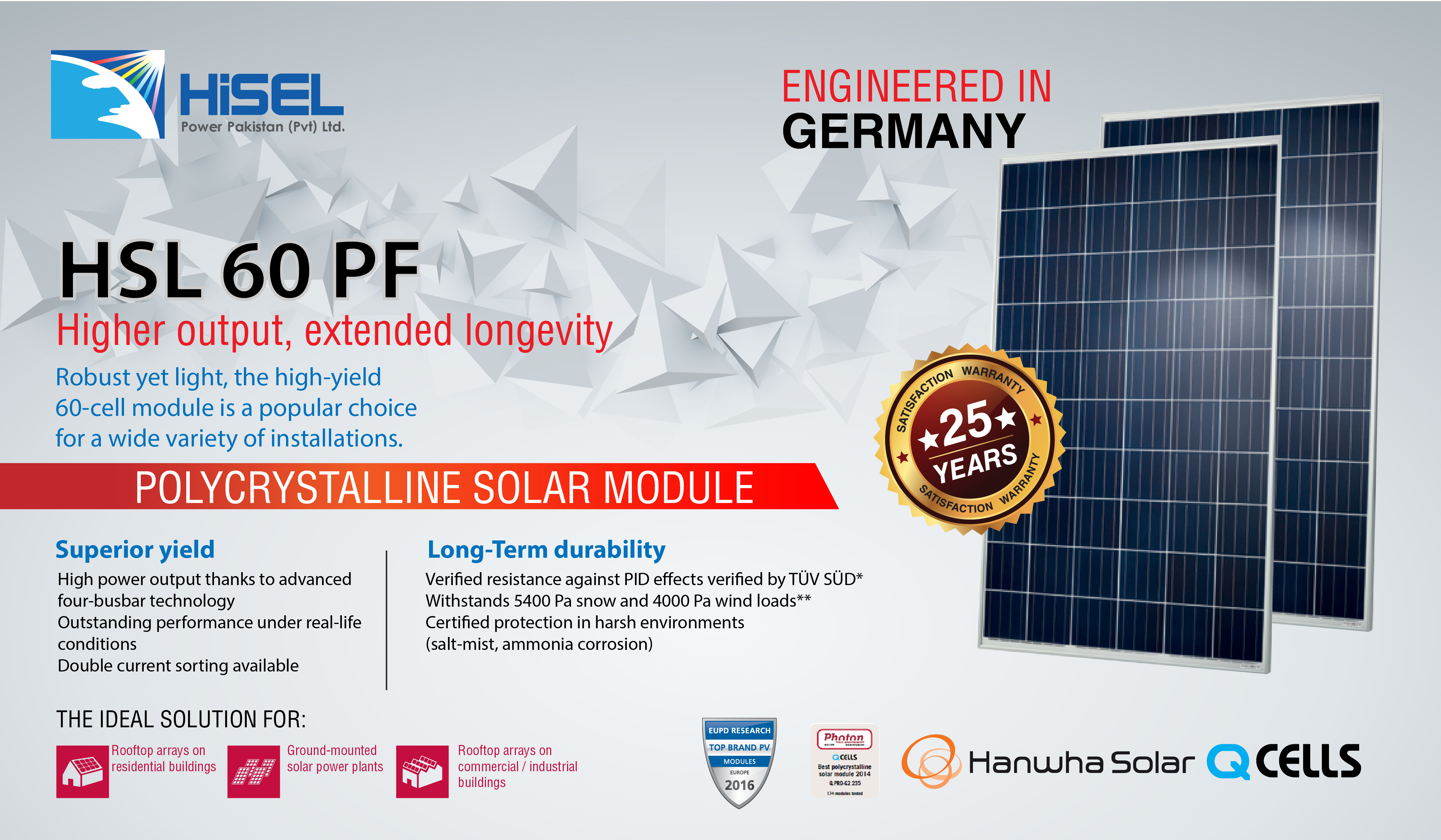Increased US Solar Tariffs: How Hanwha And OCI Plan To Benefit

Table of Contents
Hanwha Q CELLS: Leveraging Domestic Manufacturing and Supply Chains
Hanwha Q CELLS, a leading solar panel manufacturer, is uniquely positioned to benefit from the increased US solar tariffs. Its significant investment in US-based manufacturing facilities gives it a competitive advantage.
Increased Market Share
The tariffs create a less competitive landscape, allowing Hanwha Q CELLS to capture significant market share. Their substantial US manufacturing presence translates to several key advantages:
- Increased production capacity in Georgia: This allows them to meet the growing demand for domestically produced solar panels.
- Reduced reliance on imports: Minimizes delays and vulnerabilities associated with international supply chains.
- Faster delivery times for projects: A critical advantage in a rapidly expanding market.
- Stronger relationships with US solar installers: Fostering a more robust and reliable domestic supply chain.
Reduced Dependence on Foreign Suppliers
The increased tariffs shield Hanwha Q CELLS from the price volatility and supply chain disruptions that often plague companies reliant on foreign suppliers. This translates to:
- Secured supply chains: Providing greater stability and predictability.
- Greater price stability: Less susceptibility to fluctuations in global markets.
- Enhanced production reliability: Ensuring consistent output and meeting project deadlines.
- Less vulnerability to geopolitical issues: Reducing risks associated with international trade tensions.
Government Support and Incentives
Hanwha Q CELLS is ideally positioned to benefit from various government initiatives designed to promote domestic solar manufacturing. These include:
- Access to grants and subsidies: Providing financial support for expansion and innovation.
- Potential tax breaks: Reducing the overall cost of production and increasing profitability.
- Favorable regulatory environment: Creating a supportive ecosystem for domestic solar businesses.
OCI: Capitalizing on Polysilicon Production and Price Increases
OCI, a major producer of polysilicon – a crucial raw material in solar panel manufacturing – stands to gain significantly from the increased tariffs.
Polysilicon Price Surge
The increased tariffs are expected to lead to a surge in polysilicon prices, boosting OCI's profitability. Their strategic positioning offers:
- Increased production capacity: Enabling them to meet the growing demand.
- Strategic contracts with downstream manufacturers: Securing long-term supply agreements.
- Higher profit margins: Directly benefiting from the increased polysilicon prices.
- Significant revenue growth potential: Capitalizing on the increased demand for domestically produced polysilicon.
Reduced Competition from Cheaper Imports
The tariffs effectively limit the influx of cheaper polysilicon from overseas, giving OCI a substantial competitive edge. This translates to:
- Less price pressure: Maintaining higher profit margins.
- Improved market share: Gaining a stronger position in the US market.
- Stronger bargaining power with customers: Negotiating more favorable contracts.
Investment in US Production
OCI's strategic investments in expanding its US polysilicon production capabilities are now yielding significant returns thanks to the increased tariffs. This includes:
- Increased return on investment: Justifying and amplifying their initial investments.
- Strengthened US presence: Solidifying their position as a key player in the American solar market.
- Secured domestic market share: Minimizing competition from foreign producers.
Overall Impact on the US Solar Market
The increased US solar tariffs present a complex picture for the US solar market.
Short-Term Challenges, Long-Term Growth
While the tariffs may cause short-term disruptions, they are likely to stimulate long-term growth in the US solar manufacturing sector. This includes:
- Increased domestic jobs: Creating employment opportunities in the manufacturing sector.
- Enhanced energy security: Reducing reliance on foreign energy sources.
- Reduced reliance on foreign suppliers: Strengthening the resilience of the US solar industry.
Potential for Increased Solar Prices
Consumers might face higher solar panel prices in the short-term due to reduced competition. However, several factors could mitigate this:
- Need for government subsidies to mitigate price increases: Providing financial support to consumers.
- Potential for innovative solutions to reduce costs: Driving technological advancements in solar panel manufacturing.
- Long-term cost savings from reduced reliance on imports: Offsetting initial price increases over time.
Conclusion
The increased US solar tariffs create a dynamic environment for the solar industry. Hanwha Q CELLS and OCI, however, are strategically positioned to benefit significantly. Hanwha Q CELLS' focus on domestic manufacturing and OCI's dominance in polysilicon production set them up for substantial growth. While short-term price increases are possible, the long-term benefits of a stronger, more secure US solar energy sector are undeniable. To delve deeper into the impact of increased US solar tariffs and their influence on key players in the American solar industry, further research is encouraged.

Featured Posts
-
 Kasper Dolberg Og Jagten Pa 35 Mal Faktorer Der Spiller Ind
May 30, 2025
Kasper Dolberg Og Jagten Pa 35 Mal Faktorer Der Spiller Ind
May 30, 2025 -
 Did Elon Musk Father Amber Heards Twins A Timeline Of Events
May 30, 2025
Did Elon Musk Father Amber Heards Twins A Timeline Of Events
May 30, 2025 -
 Nuevo En Ticketmaster Vista Virtual Del Estadio Antes De Comprar Entradas
May 30, 2025
Nuevo En Ticketmaster Vista Virtual Del Estadio Antes De Comprar Entradas
May 30, 2025 -
 Another Measles Case In Virginia 2025 Understanding The Risk
May 30, 2025
Another Measles Case In Virginia 2025 Understanding The Risk
May 30, 2025 -
 Anisimovas Victory Andreevas Miami Open Campaign Ends
May 30, 2025
Anisimovas Victory Andreevas Miami Open Campaign Ends
May 30, 2025
Latest Posts
-
 Legal Battle Erupts Dragon Den Alum Claims Puppy Toilet Idea Infringement
May 31, 2025
Legal Battle Erupts Dragon Den Alum Claims Puppy Toilet Idea Infringement
May 31, 2025 -
 Puppy Toilet Patent Dispute Dragon Den Entrepreneur Takes Legal Action
May 31, 2025
Puppy Toilet Patent Dispute Dragon Den Entrepreneur Takes Legal Action
May 31, 2025 -
 Dragon Den Star Sues Competitor Over Stolen Puppy Toilet Invention
May 31, 2025
Dragon Den Star Sues Competitor Over Stolen Puppy Toilet Invention
May 31, 2025 -
 Dragon Den Winners Lawsuit Accusations Of Puppy Toilet Idea Theft
May 31, 2025
Dragon Den Winners Lawsuit Accusations Of Puppy Toilet Idea Theft
May 31, 2025 -
 Estevans 2024 Street Cleaning Schedule Know Before You Go
May 31, 2025
Estevans 2024 Street Cleaning Schedule Know Before You Go
May 31, 2025
